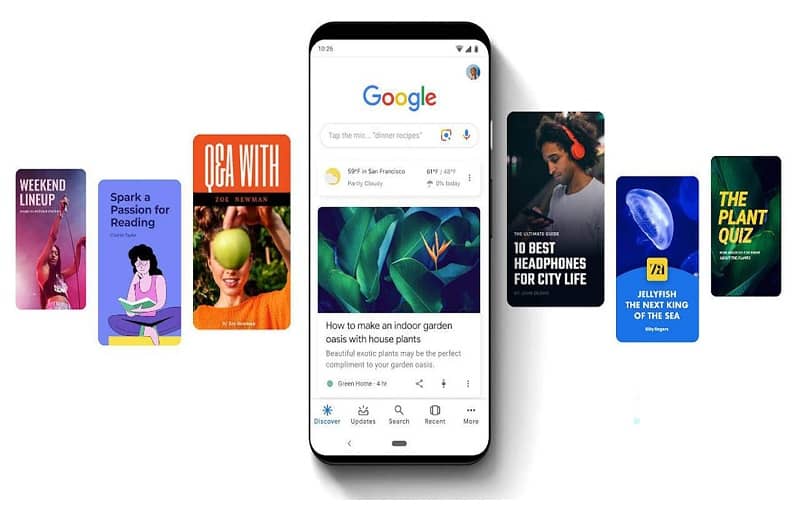
Tips for Creating a Lead Score Model
June 22, 2022
Tips for Creating Lead Generation Forms That Work
July 1, 2022
Google Web Stories are interactive, video-first pieces of content that creators can use to share information with audiences through tappable pages featuring audio, images, and text. It was formerly known as AMP Stories.
Google says that styles that work the best with the format are first-person narratives, evergreen or updating stories, live stories, educational and experiential stories, and quizzes and polls.
Web Stories appear in standard Google Search results and as carousels in Google Discover, and you can also add them to a newsletter and link to them from your social media accounts.
Web Stories are also individual pages on your website, so they can be indexed and surfaced in relevant results. You can feature them as individual pieces of content within your website or embed them like podcast episodes or YouTube videos.
Google Web Stories Format
Web Stories have three parts: a poster, a cover page, and story pages.
The poster is the first thing someone sees in your Story, and Google describes it as the packaging. Your cover page is the first page of the content of your story, and story pages are where you begin to tell your story and narrative with video, text, and your preferred assets. There is only one poster and cover page per story, but you can have multiple story pages.
You can monetize Google Web Stories with AdSense, Ad Manager, and display ads. You can also include affiliate links as attachments or CTAs.
How to Make Google Web Stories
Storyboard your narrative.
The first step is to storyboard and draft a narrative. Google created a storyboard script template to use to draft your Web Story narrative.
Choose an editor.
After you’ve created a final draft, pick the editor you’ll use to create your Story. If you have developer skills, you can follow a tutorial from AMP that will guide you through the process of creating a Story with custom functionality.
If you don’t have developer skills, you can use one of the recommended no-coding necessary editors.
If you’re a WordPress user, you can use the Web Stories Plugin.
Create your Web Story
Once you’ve chosen your editor, begin building your Web Story.
Test your web story before publishing.
The final step is to enable your Web Story on Google, and this requires testing it with various tools.
-Test if it is AMP valid using the AMP test tool or AMP Test Validator.
-Check if your Story can be indexed by Google using the Sitemaps Report and URL Inspection Tool.
-Check if your story renders appropriately for different devices with Chrome Developer Tools.
To embed a Web Story on your WordPress site, you’d use the Web Stories block. If you’ve created your Web Story with any AMP tools, you’ll receive an embed link that you can paste within your site code.
Best Practices for Creating Google Web Stories
Champion video-first storytelling.
Google meant for Web Stories to be video-first. It favours video over all else but welcomes audio, images, and animations that help you create a narrative. You can include text, but when you use it, aim for less than 280 characters, or approximately 40 to 70 words per page.
Use engaging elements.
Stories are meant to be interactive and engaging for users, so aim to use interactive elements.
The best way to do so is to have multiple story pages so you capture viewer attention and get them excited to tap and learn more. You can also include interactive quizzes and polls, CTAs, and links to different pages to increase viewer interaction with your content sources.
Use your brand identity.
Stories show up in SERPs and Google Discover, so you want to include your unique brand elements, so audiences know it’s you.
Ensure your stories are AMP valid.
Web Stories run on the AMP framework, so they need to be AMP valid. We recommended various testing tools above, so make sure to use them throughout your process to ensure your Stories can appear on the web.
Make your Web Stories accessible.
Although you want to champion visual storytelling, your Web Stories also need to be accessible. Add alt text to your images, transcribe audio, use subtitles and captions, and add metadata to your Stories to ensure everyone can benefit from them.
Be mindful of Google’s SEO standards.
Web Stories are pages on your website. As a result, you want to be mindful of SEO best practices when creating your Web Stories so they can be indexed and ready to appear in SERPs.
For more interesting and informative content, subscribe to our blog!


